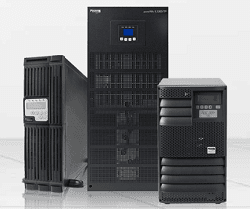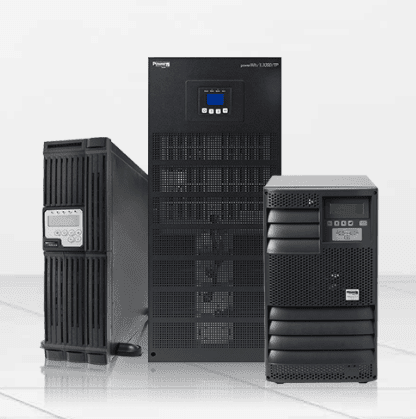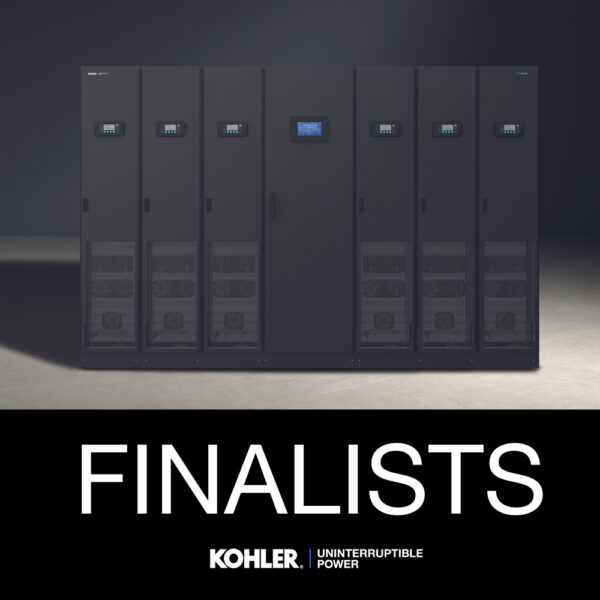UPS systems are typically viewed as either large-scale installations for data centres, or small units residing under a user’s desk to support a single PC. While both these applications are valid, there is also another class of users – organisations that have a critical need for a secure, continuously available IT resource, but cannot justify a dedicated data centre. Such organisations often choose to run an IT facility comprising a smaller-scale computer network within their own office premises instead.
Within a small or medium office system environment, the consequences of a power failure affect far fewer people, but could be just as critical for those that are involved. Continuous IT availability remains essential, irrespective of the size of their organisation or IT resource.
The underlying pressures on an office IT manager will be the same as those on a data centre manager, albeit scaled down; he will require continuous power with protection from power surges, sags and spikes as well as complete power outages, delivered from a UPS system that is cost-effective to purchase, right-sized for his environment and energy-efficient to run. Scalability will also be relevant to enable the organisation and its load to grow over time.
KUP’s range of single-phase UPS
These smaller-scale requirements are well recognised by UPS suppliers, many of which offer a range of solutions from below 1kVA up to 5kVA. The smallest systems comprise single-phase units for supporting a single desktop PC, which can be plugged into a normal 13A mains outlet. Typically implemented within a PC tower or mini-tower form factor, such units are aesthetically and technically suitable for installation next to the PC they are protecting. They are available with on-line, off-line or line-interactive topologies, although on-line is recommended as the only way of ensuring that fully-protected power is supplied at all times.
Similar but slightly larger systems, rated to a few kVA are also available. They may still be portable and operate from a single-phase IEC plug, however their increased rating allows them to power a fileserver or complete workstation. They may also support an extended battery cabinet to offer increased battery autonomy.
Larger systems from 3kVA to 20kVA are available to support networks rather than single PCs or workstations; typical examples include complete office networks, small server farms or communications centres. At the higher power ratings, these systems may be permanently installed using three-phase inputs and possibly supplying three-phase outputs. Many manufacturers will facilitate extra battery capacity by offering visually compatible add-on battery cabinets.
Batteries are often more of an issue for a small office system than a data centre, where a standby generator is in operation. Without generator access, the smaller system must rely on the UPS battery autonomy to stay online. Accordingly, investment in extra battery cabinets to provide a backup time of several hours may be considered desirable.
These smaller systems can offer the same flexibility and reliability as their larger data centre counterparts. Some comprise fully modular designs with no single point of failure. UPS capacity can be incremented by, say, 1.25kVA at a time by plugging in UPS power boards, so N+1 redundant systems can be configured with minimal excess UPS overhead and cost. As an alternative arrangement, some systems can be paralleled for extra capacity or redundancy using a CANbus interconnection.
Smaller systems today also address another issue of great importance to all users – energy efficiency. High efficiencies of well over 90% at 100% load are available, together with near-unity power factors and low input current THDi regardless of load.
Divergence from the data centre environment is not just about scale. Day to day operation of the UPS equipment will have to be managed by office staff if the site does not warrant a permanent IT or UPS specialist. As many of these UPS systems are located next to or at least within close proximity to the equipment they support, their task will be eased by user-friendly front panel mounted displays. These should reveal major system parameters and current status, including load level, battery level, system wiring faults, overload and programmable output status. For the larger systems, remote alarms, diagnostics and control should also be possible using status contacts, serial or network communications.
If you are investigating the best system for your own requirements, speak to one of our technical specialists who will be able to provide free advice on the most appropriate solution. Call us on 0800 731 3269 or email us at [email protected].






